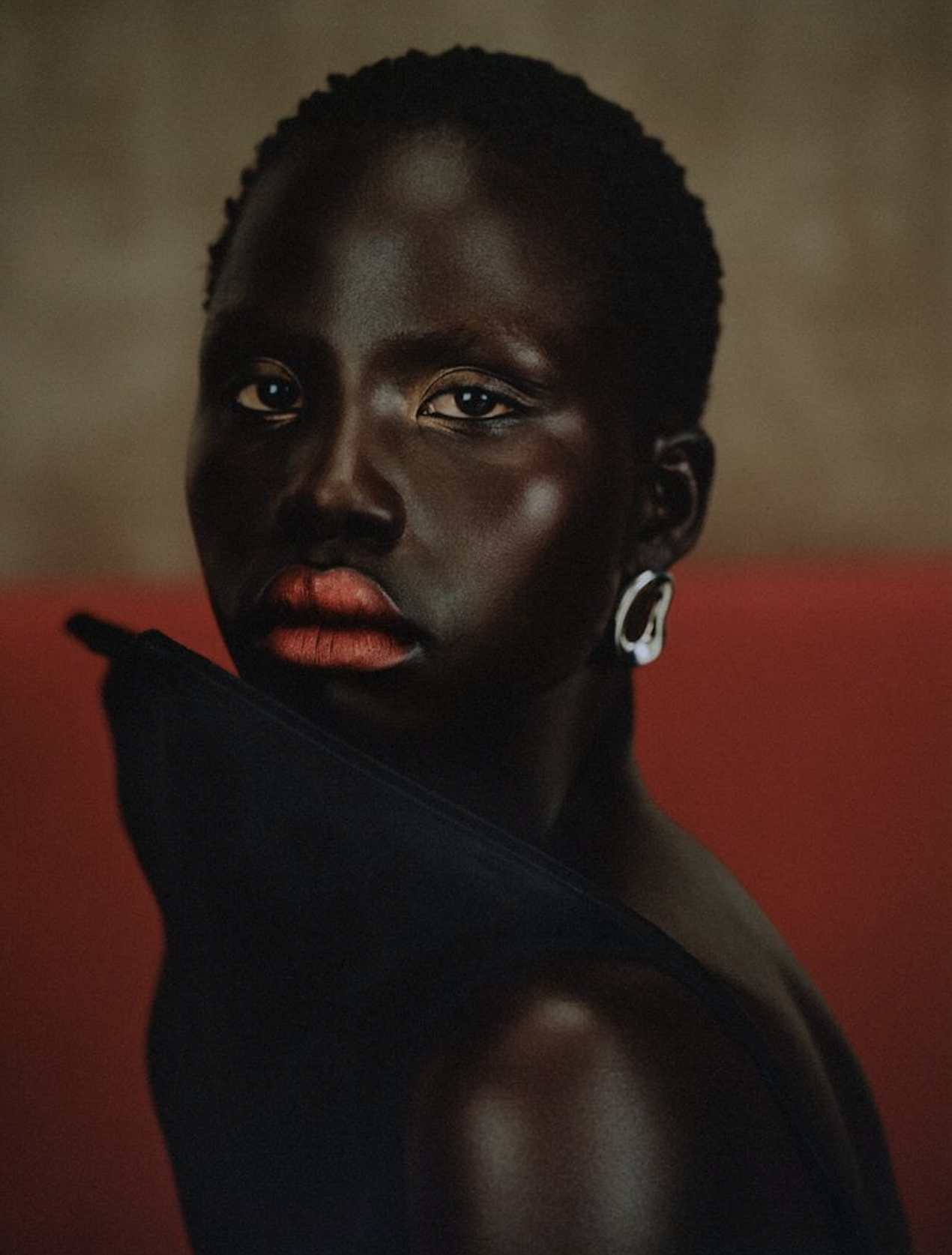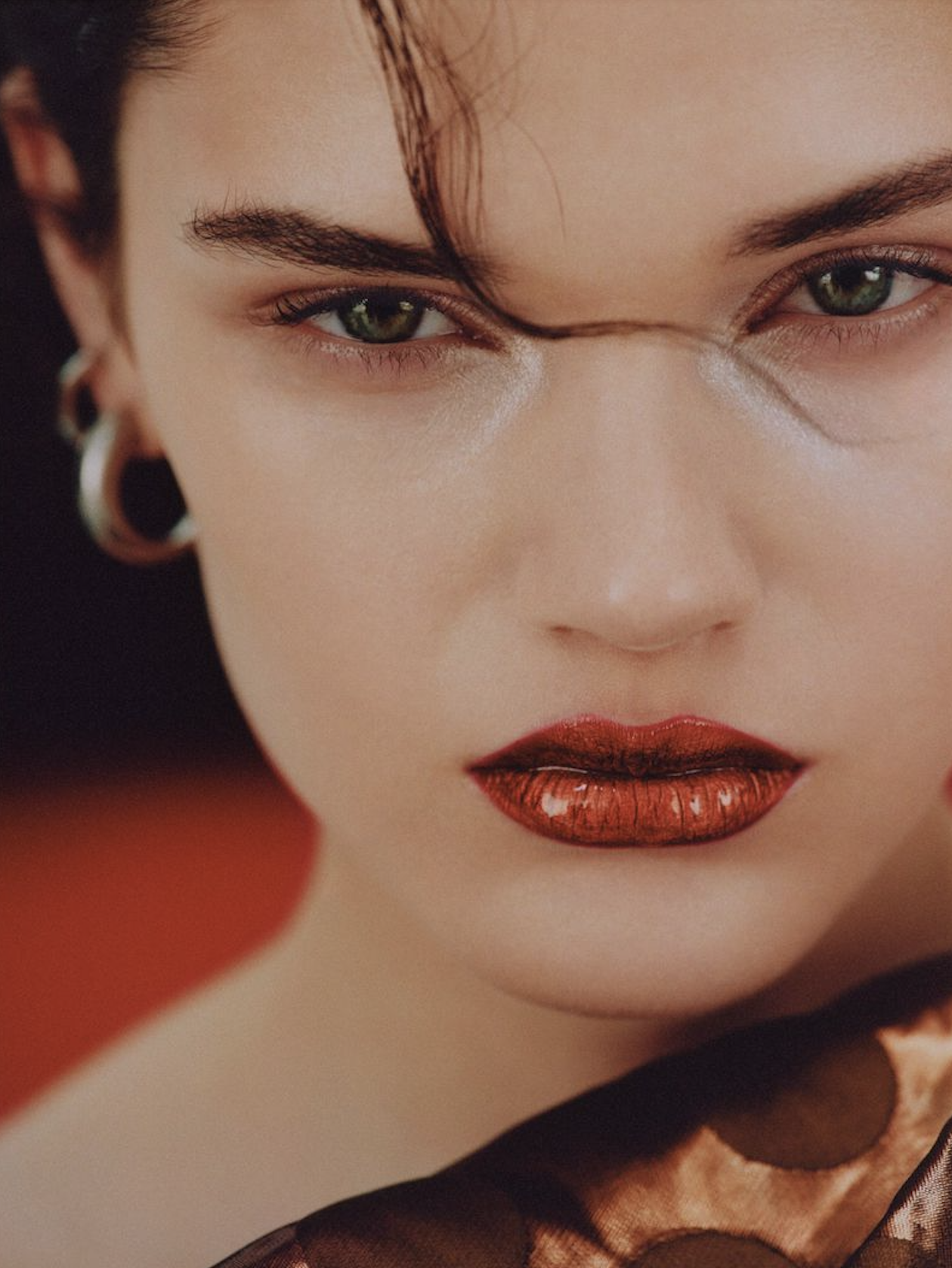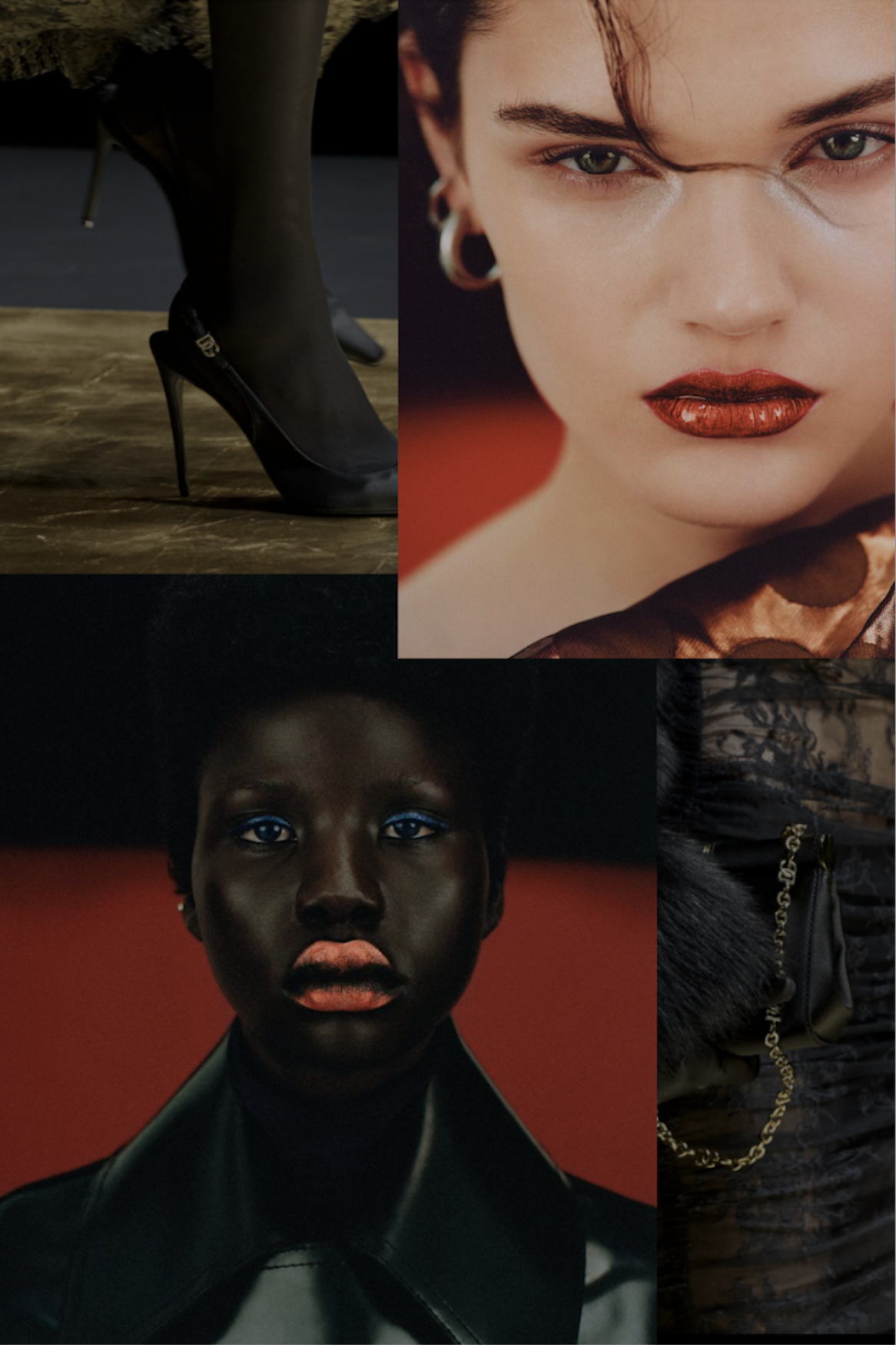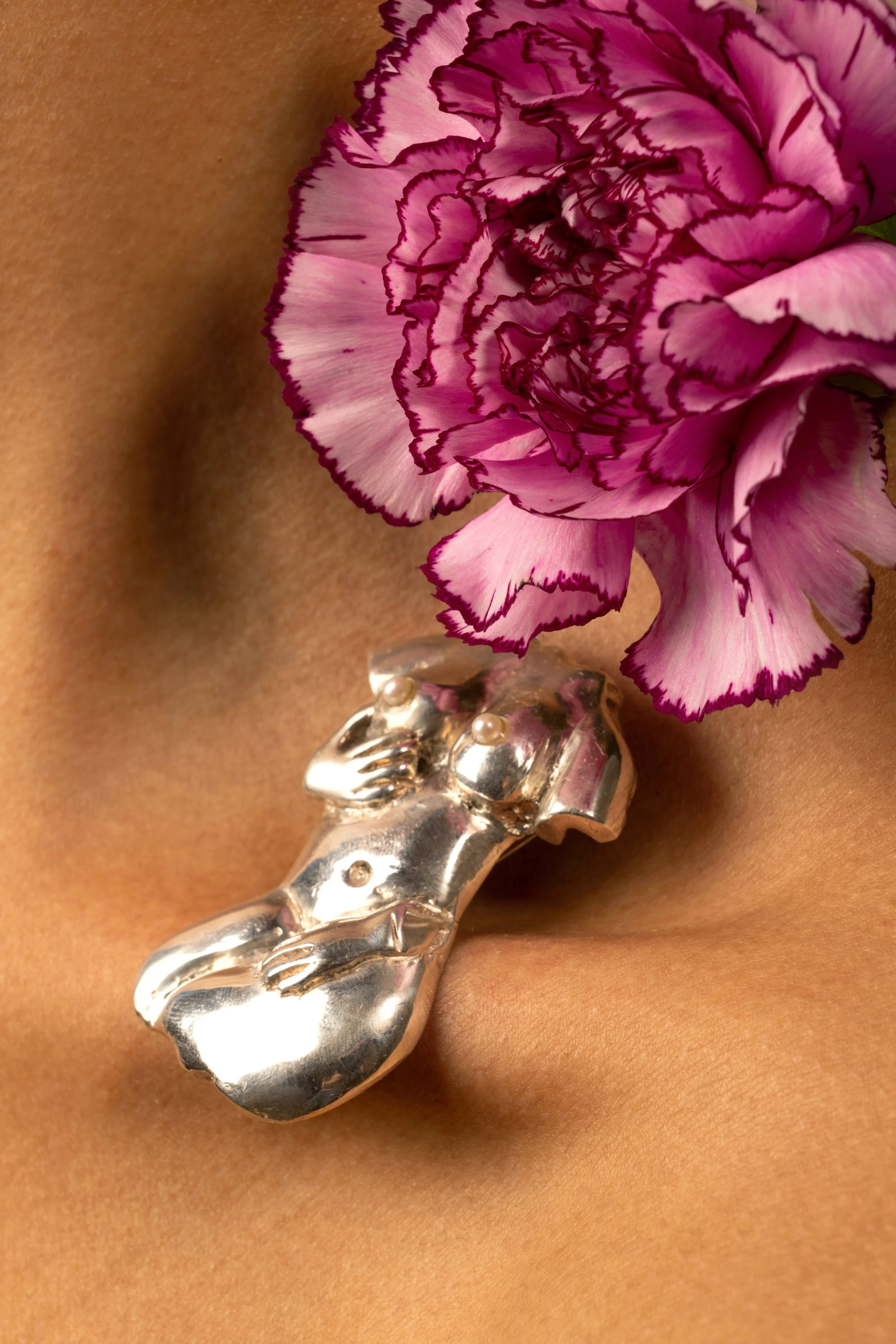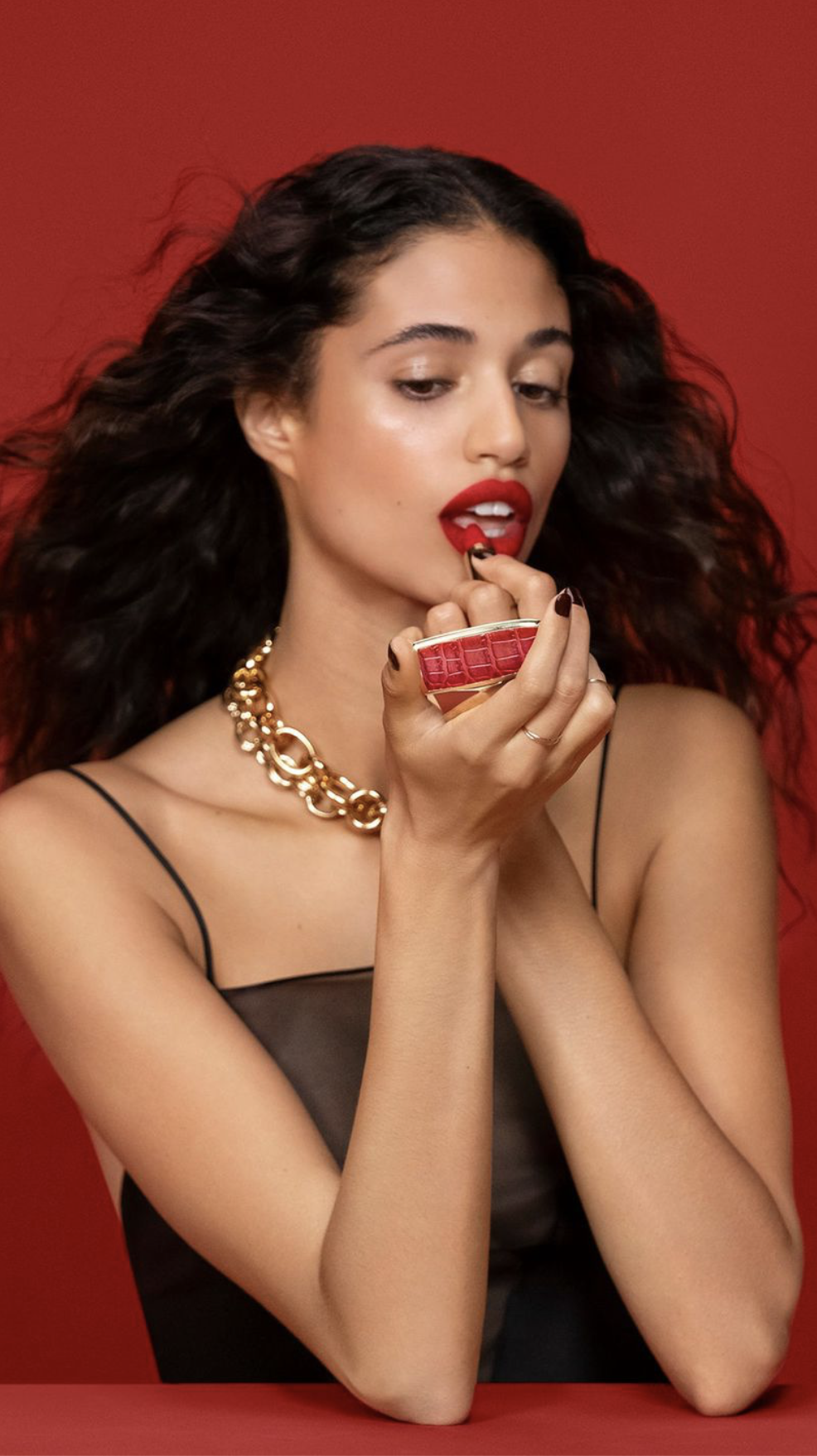Vogue Greece Sends Red Kisses | AOC Goes to Babylon for a Primer on Cherry Lips
/It’s a truism about Anne of Carversville that it’s typically written ‘stream of consciousness’. We quickly determine if this is a post with or without extensive commentary.
Once that question is answered and if serious writing is required, Anne takes the wheel. Where we’re going, nobody knows — not even her most of the time.
Whenever we’re in Vogue Greece [IG] — like now with the October 2024 beauty feature ‘Red Kisses’ — we just get Anne on speed dial.
Models Lucy Rosiek and Naomi Apajok are styled by Glen Mban in ‘Red Kisses’, lensed by Johan Sandberg [IG]./ Hair by Melissa Rouillé; makeup by Lauren Bos
Note that Vogue Greece published the six model images by Sandberg. AOC created the composites.
Red Lipstick In Ancient Mesopotamia
In the annals of ancient history, the use of red lipstick finds one of its earliest origins in Mesopotamia, a cradle of civilization that flourished in the regions of the Tigris and Euphrates rivers. The people of ancient Mesopotamia, notably the Sumerians and later the Assyrians and Babylonians, were among the first to transform the act of adorning one's lips into an art form.
The Sumerians, who inhabited this region around 5000 BCE, were innovative in their use of makeup, utilizing naturally occurring resources for cosmetic purposes. Red lipstick was crafted using crushed gemstones and minerals, creating a brilliant hue that not only signified beauty but also denoted social status and power.
Ancient Babylonian Culture and Beauty Practices
Ancient Babylonia, one of the most influential civilizations of Mesopotamia, boasted a rich tapestry of cultural practices and societal norms. This thriving civilization, centered around the fertile land between the Tigris and Euphrates rivers, reached its zenith under the rule of iconic leaders like Hammurabi. The Babylonians were renowned for their advancements in law, mathematics, and astronomy, which not only shaped their society but also left a lasting impact on subsequent cultures.
Lip color served as a marker of social distinction, indicating a woman's place within the intricate hierarchy of Babylonian society. The richness and intensity of the hue could implicitly communicate wealth and access to expensive pigments that were beyond the reach of lower classes. This visual expression was a subtle form of communication, a way for women to assert their identity and presence in a society where visibility often correlated with influence.
Lip Color and the Divine Feminine
Beyond social stratification, lip color also conveyed aspects of femininity and allure, playing a role in rituals and rites associated with love and attraction. The divine feminine was celebrated in Babylonian mythology, where goddesses were revered for their beauty and grace; by adorning themselves with lip color, women could symbolically align themselves with these powerful deities.
This alignment not only enhanced personal esteem but also connected them to the spiritual and mystical dimensions of their culture, reinforcing the idea that beauty was interwoven with divine favor and protection.
Women were integral to religious practices across Mesopotamia, including in Babylon. They functioned as priestesses, performing rituals and organizing the temple’s activities. The pantheon of Mesopotamian gods included powerful female deities, such as Inanna and Ishtar, who reflected societal views on femininity and divine power.
Women served as key figures in the experience of religion in Mesopotamian societies. There’s no doubt that women’s lives were becoming more constricted, as human civilizations advanced towards the beginnings of Christianity, where the patriarchy was absolute.
But it’s clearly the rise of one god in monotheism vs the polytheism in highly-advanced societies that impacted women’s choice of lipcolor, more than any other factor.
